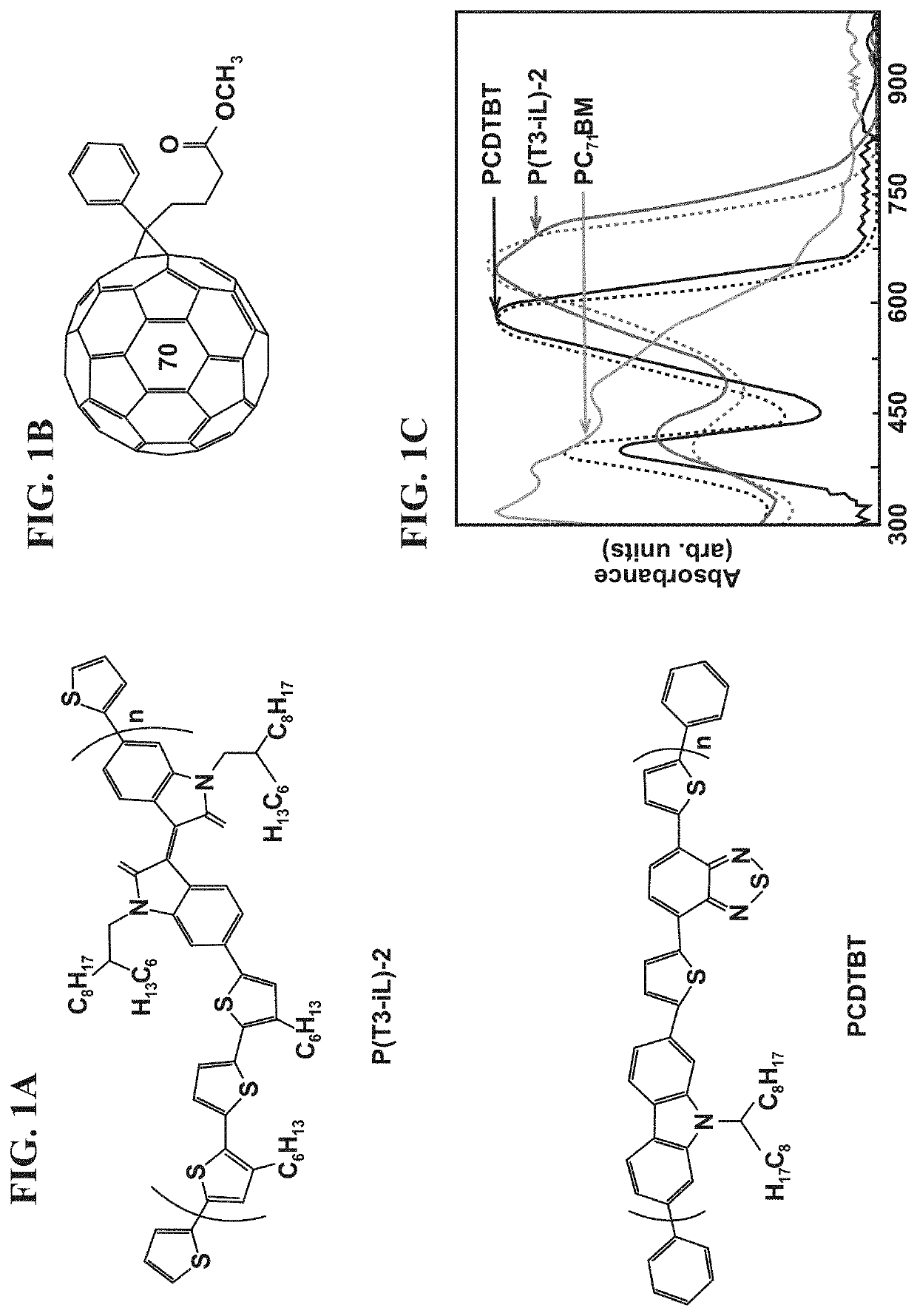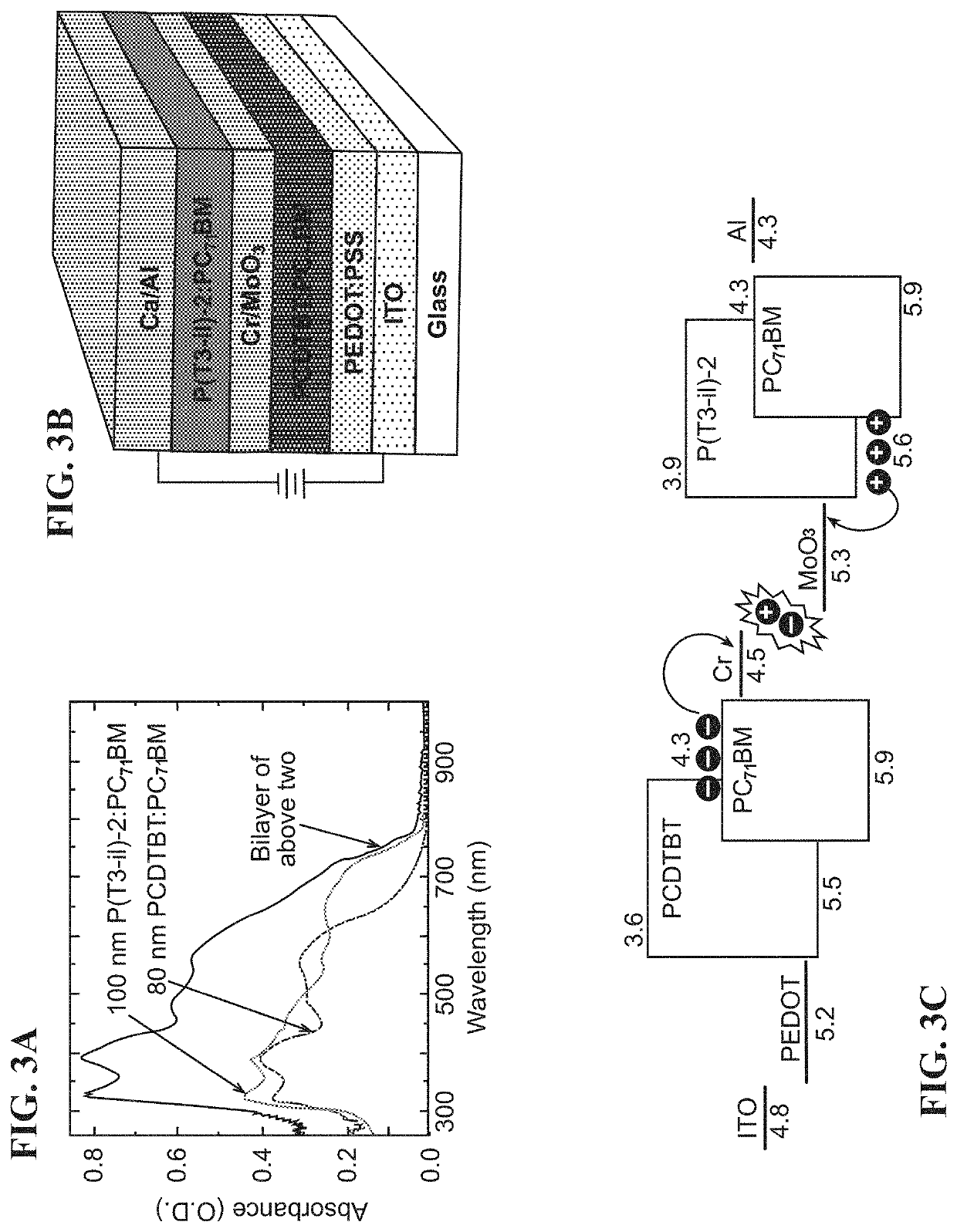Efficient interconnecting layer for tandem solar cells
a tandem solar cell and interconnection layer technology, applied in the field of solar cell construction, can solve the problems of difficult to achieve greater than 10% power conversion efficiency (pce) from single junction based pscs, low cost, and high-throughput production of pscs requires the development of a technology that is unlimited, and achieves the effects of reducing optical losses, reducing production costs, and selective collection of charge carriers
- Summary
- Abstract
- Description
- Claims
- Application Information
AI Technical Summary
Benefits of technology
Problems solved by technology
Method used
Image
Examples
examples
[0045]Single Junction Device Fabrication. All solar cell devices were fabricated on patterned ITO glass (Sheet resistance of 15Ω / □). On the day of deposition, the ITO glass substrates were cleaned sequentially by sonicating with detergent, deionized water, acetone, and iso-propanol, followed by drying with high flow of nitrogen and UV-ozone treatment for 20 min. Filtered (0.45 micron PVDF filter) poly-(3,4-ethylenedioxythiophene:poly(styrenesulfonic acid) (PEDOT:PSS; Clevios Al4083 from Heraeus Materials Technology) was spin-coated on clean ITO glass substrates at 3000 rpm for 60 s and then dried on a ceramic hot-plate at 160° C. for 20 min in air. Thereafter, substrates were immediately taken to a nitrogen-filled glove box for active layer deposition. For single junction PCDTBT device of different thickness, PCDTBT:PC71BM (1:2 weight ratio; 2 volume% of DIO as processing additive) blend in chloroform was spin-coated on top of ˜40 nm PEDOT:PSS at 2000 rpm for 60 s in the concentrati...
PUM
| Property | Measurement | Unit |
|---|---|---|
| molecular weight | aaaaa | aaaaa |
| thick | aaaaa | aaaaa |
| thick | aaaaa | aaaaa |
Abstract
Description
Claims
Application Information
 Login to View More
Login to View More - R&D Engineer
- R&D Manager
- IP Professional
- Industry Leading Data Capabilities
- Powerful AI technology
- Patent DNA Extraction
Browse by: Latest US Patents, China's latest patents, Technical Efficacy Thesaurus, Application Domain, Technology Topic, Popular Technical Reports.
© 2024 PatSnap. All rights reserved.Legal|Privacy policy|Modern Slavery Act Transparency Statement|Sitemap|About US| Contact US: help@patsnap.com










